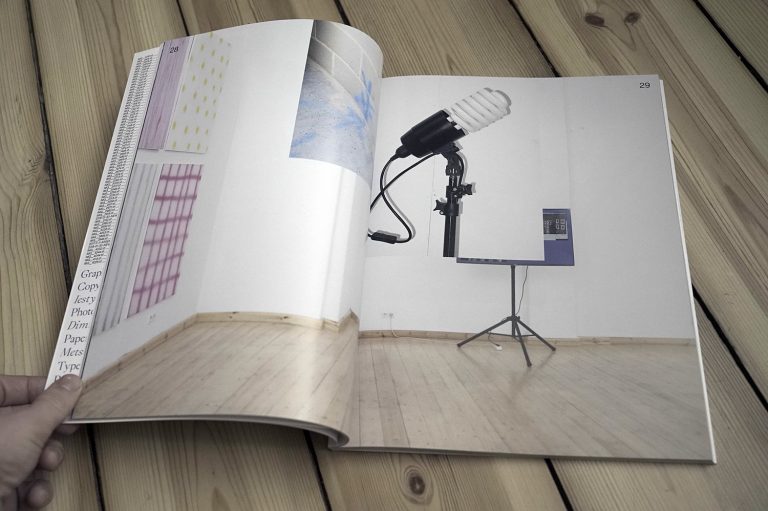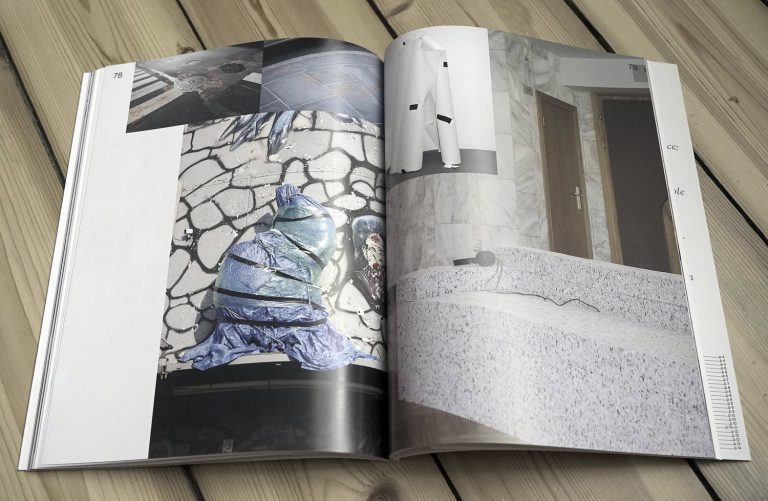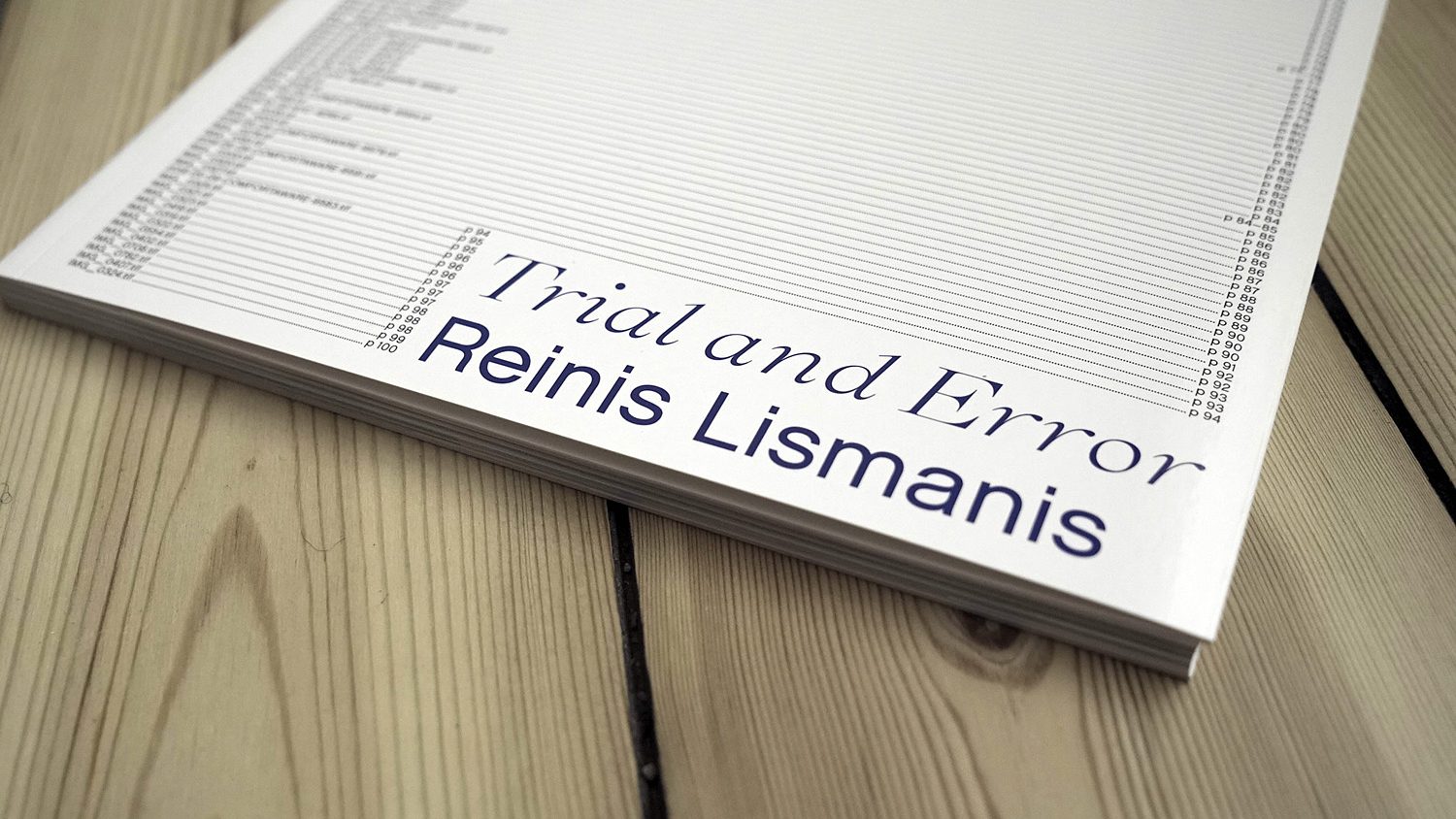10 minutes with Reinis Lismanis
Reinis Lismanis (1992) was born in Jūrmala, Latvia, but currently lives and works in London, UK. In his works he explores photographic production, methods and elements, experimenting with printing techniques and installation structures. Lismanis graduated from the University of Brighton in 2014, receiving the Tom Buckeridge Photography Award. Since 2012 his work has been exhibited in group shows in China, Hungary, Italy, Latvia, Slovenia, Switzerland, and the UK. His most recent shows in Latvia includes his solo show Trial and Error at the exhibition hall Arsenals in 2017 and participation in the group show at Riga Photomonth in 2018. Earlier this year the Lithuanian publisher NoRoutine Books launched his photobook T6031_T6061_T8001, but just recently the Italian Skinnerboox published a comprehensive monograph of his recent work – Trial and Error.
Please tell us briefly about the concept of the book.
The idea of the book came about when I was first offered a solo show back in 2015 or 2016. I wanted to make something that would have a life after the exhibition. In my practice, I have been dealing with systems and frameworks, approaching this topic from the point of view of photographic and artistic production. I have been attempting to engage with the black boxes and everyday processes of it and bring the behind-the-scenes to the forefront in a playful manner. For me, this engages with wider questions about how we go about the decisions we make in our daily lives and what amount of control we really have as members of this contemporary and increasingly digital society. Also, ideas of what is successful, what it not, what is the final thing and what is just the process of getting to it, are all scrutinized. Essentially, the publication became a vessel, a comprehensive overview of the work that I have been developing and of these ideas.

You already had a book this year. Why publish another one so soon?
That was completely accidental. Trial and Error, the book, was sort of bobbing along in the background as that solo show and another exhibition that I participated in during the 2018 edition of Riga Photomonth had already finished. I decided to apply for the Riga Photography Biennial’s award. To my surprise, NoRoutine Books from Vilnius selected me for the special prize, which was an opportunity to develop a publication in a small run of 99 copies. First, I thought there might be some scope to combine this opportunity with the work that had already begun on Trial and Error (which by then also had a publisher – Skinnerboox) but after some discussion it became clear that it would not be possible to fit everybody’s ideas under one roof successfully. So, we ended up with two totally different approaches and two very different publications. That’s how things always happen in life – nothing happens for months on end and then suddenly everything comes flying at you at the same time.
Can we also view this book as an appropriation of your existing works?
I have never thought about it in terms of appropriation, but the themes of re-using, re-cycling, continuous process, and change are becoming more and more important to me, so I suppose that reading totally makes sense. I am interested in ways how existing material can be reactivated in specific contexts, so it felt very natural to use the book in a way that exceeds the classical idea of an exhibition catalogue.

What was the hardest part of making the book?
To begin with, editing was of course complicated. When you are trying to be totally transparent and expose the process of work in the manner that I’ve chosen, it can be complicated to figure out where to start and when to stop. Here, hundreds of snapshots that I had made over the last however many years became really central to the concept of the book, but it was impossible for me to detach myself from them and cut them loose. Thankfully, with the help of my artist friends and the brilliant work of the designer of the book, Ott Metusala, the edit could be narrowed down enough to make it slightly more comprehensible, even just logistically. Also, setting deadlines and sticking to them proved to be difficult. Originally, I thought the book might get published in early 2018, but here we are a year-and-a-half later… All the technical aspects of finalising designs, proof-reading, copy-editing etc. are extremely tedious, time-consuming and require immense focus, so it was very important for me to get as much advice and input from more experienced people who have already gone through similar processes as I could.

The book looks like a retrospective, so what’s next?
Sure, the book includes most things that I’ve done in the past several years, but I see it more as a comma than a full stop. Generally speaking, I think I have more or less abandoned the idea of project-specific artistic work and I am instead trying to focus on the overarching concepts that I am interested in. This way it becomes a matter of sustaining a fresh view on the same issues and pushing the responses further and further. I think my work branches out here and there, but the roots of the practice have so far remained the same. I see it as an exercise in gradually building the context in which the work then comfortably sits in.



